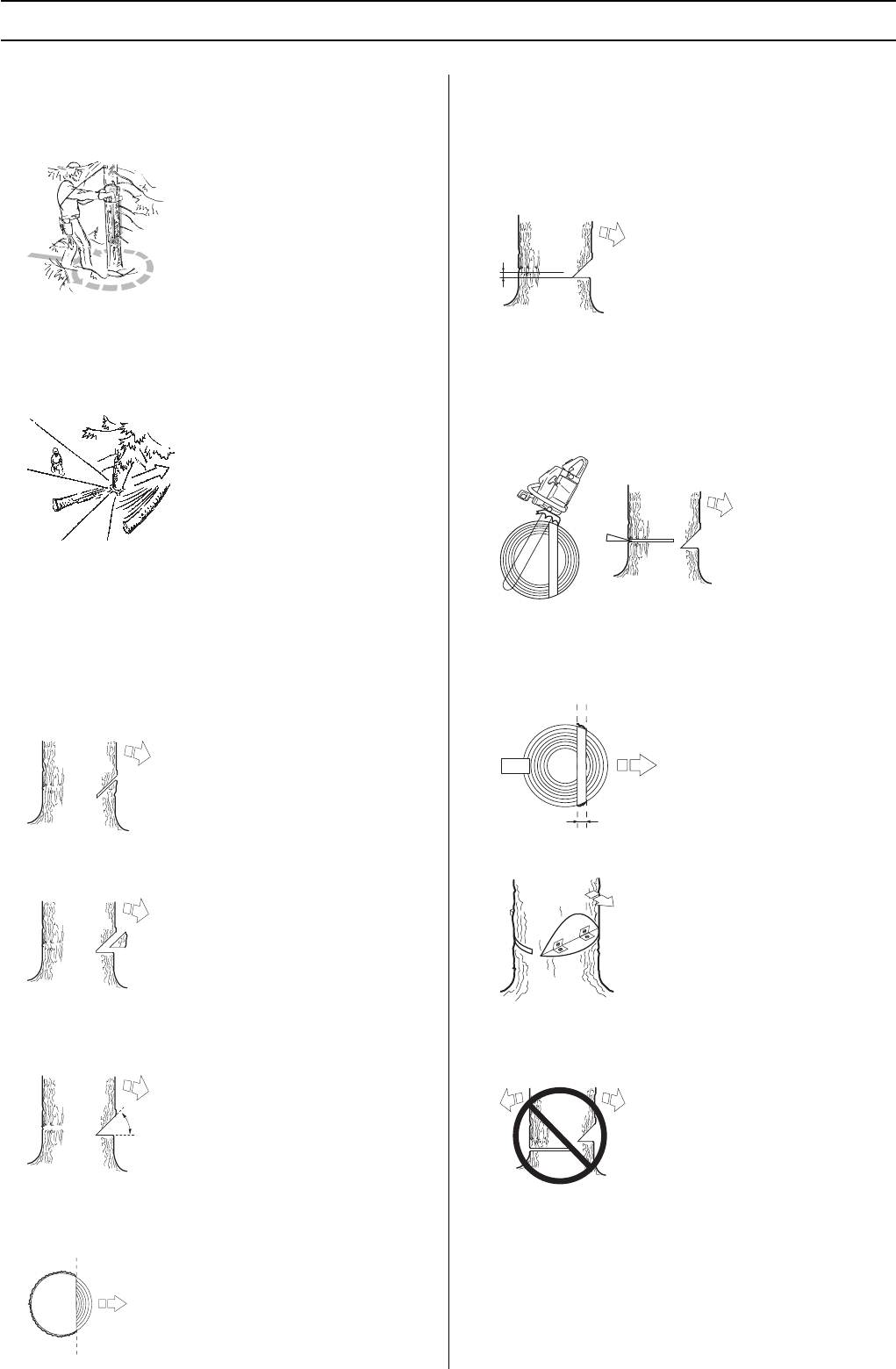
20 – English
SAFETY INSTRUCTIONS
Clearing the trunk and preparing your retreat
Remove any branches that are in the way. To do this it is best
to work from the top down and keep the trunk between you
and the chain saw. Never limb above shoulder height.
Remove any undergrowth from the base of the tree and check
the area for obstacles (stones, branches, holes, etc.) so that
you have a clear path of retreat when the tree starts to fall.
Your path of retreat should be roughly 135 degrees away from
the intended felling direction.
Felling
Felling is done using three cuts. First you make the directional
cuts, which consist of the top cut and the bottom cut, then you
finish with the felling cut. By placing these cuts correctly you
can control the felling direction very accurately.
Directional cuts
To make the directional cuts you begin with the top cut. Stand
to the right of the tree and cut on the pull stroke.
Next make the bottom cut so that it finishes exactly at the end
of the top cut.
The directional cuts should run 1/4 of the diameter through
the trunk and the angle between the top cut and bottom cut
should be 45°.
The line where the two cuts meet is called the directional cut
line. This line should be perfectly horizontal and at right
angles (90°) to the chosen felling direction.
Felling cut
The felling cut is made from the opposite side of the tree and
it must be perfectly horizontal. Stand on the left side of the
tree and cut on the pull stroke.
Make the felling cut about 3-5 cm (1.5-2 inches) above the
bottom directional cut.
Set the spike bumper (if one is fitted) just behind the felling
hinge. Use full throttle and advance the chain/bar slowly into
the tree. Make sure the tree does not start to move in the
opposite direction to your intended felling direction. Drive a
wedge or breaking bar into the cut as soon as it is deep
enough.
Finish the felling cut parallel with the directional cut line so
that the distance between them is at least 1/10 of the trunk
diameter. The uncut section of the trunk is called the felling
hinge.
The felling hinge controls the direction that the tree falls in.
All control over the felling direction is lost if the felling hinge is
too narrow or non-existent, or if the directional cuts and felling
cut are badly placed.


















